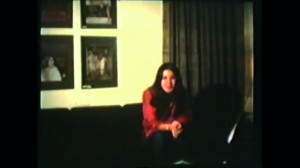
“1978 yapımı Vedat Türkali’nin senaryosu yazdığı Süreyya Duru’nun yönettiği Güneşli Bataklık filminin kamera arkasında çekilen 1979 yapımı bir belgeseldir. İlk defa 1. Uluslararası İşçİ Filmleri Festivali kapsamında gösterilmiştir. Kaya Tanyeri tarafından festival komitesine verilen 8mm filmler, dijital hale getirilmiş 25 yıl sonra ilk defa gösterilmiştir.” Sinematek.tv: http://sinematek.tv/gunese-donuk-kamera-1979/ (9 November 2019).
“It is a behind-the-scenes documentary of Güneşli Bataklık (1978) [Sun over the Swamp] whose scenarist is Vedat Türkali and director is Süleyman Duru, made in 1979. For the first time, The 1st International Workers’ Films Festival screened the film. The 8mm film given by Kaya Tanyeri to the festival committee was digitized and screened 25 years after its production first.” Sinematek.tv: http://sinematek.tv/gunese-donuk-kamera-1979/ (9 November 2019).
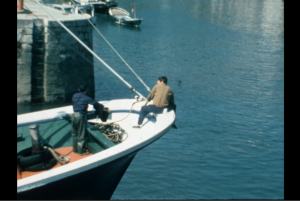
Itsasoko bizimodua.
El filme retrata la forma de vida en la mar en Lekeitio
The film portrays the life on the sea in Lekeitio.
"This is a superb film about the Strategic Air Command and shows us how the SAC is constantly ready to strike and destroy an aggressor anywhere in the world. The purpose of the film, to quote directly from the sound track: "Is to show you the power of the hand (that controls the nuclear bomb release in modern jet bomber) and how it protects those who desire peace and freedom." Specifically, this is the story of the six men who man a B-52 all-jet bomber nicknamed "Ready 11", and how it would carry out an order to strike and obliterate an enemy target anywhere in the world. The B-52 can launch supersonic missiles that are accurate and deadly, and the launching scenes and those showing the missile following its course until it hits its target are as outstanding as any in the film. Most of the photography was taken around Mather Air Force Base near Sacramento, Calif. Dr. Franklin states he spent four years making the film, and it required two years of letter writing to get permission to ride in military plans as civilian to get the footage he wanted. He had to pass a physical examination, become familiar with oxygen equipment, and learn ejection procedures. Classified material presented a problem, also, and it required an additional year and a half to obtain Air Force approval of the footage used in the final film" PSA Journal, Sept. 1964, 50.
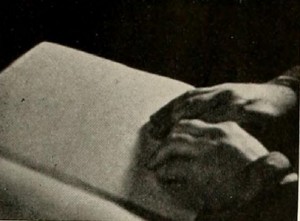
"It is a striking gesture to employ the one medium which depends upon the sense of sight to aid the cause of the blind. This is what Jack L. Krapp has done in his comprehensive movie, Hands that Work in the Darkness, a thoroughgoing presentation of the unusual work being done for the sightless by the Cleveland Society for the Blind. The film is of generous length, yet, because of Mr. Krapp's special skill in maintaining interest through choice of viewpoint and because of the absorbing subject matter, it holds the attention throughout. Appropriate musical background, together with the delivery of a well composed spoken narrative, further enhances the presentation of the subject. Mr. Krapp's interior lighting work is very well done, and he seems to be able to take large or small interiors in his stride. A notable section of the film includes the recording of a play, performed by blind actors on a full sized stage. This is an excellent record film and a splendid achievement in its field." Movie Makers, Dec. 1940, 602.

"In the Home Movie field, Lawrenson submitted a fine document of a day with his little 2-year-old daughter. The main portion is given over to a day at the seashore. But he gives reasons for everything he does even to going home. He shows a storm coming up and after the family has arrived safely at home, the little looks out of the window while the raindrops patter on the windowpane." American Cinematographer, Jan. 1936, 24.
"From Australia James A. Sherlock sent 'Harbor,' a picture in Kodachrome. While the picture was well made, finely edited and cut, it suffered from uneven coloring and density. Undoubtedly much was taken with the earlier Kodachrome which darkened rapidly after it was exposed if it was not rushed to the processing plant." American Cinematographer, Feb. 1937, 73.
Presumably a documentary or travelogue about Hatley Park and Hatley Castle, the Edwardian estate and mansion built in 1906 for James Dunsmuir, the Lieutenant-Governor of British Columbia. In 1966, when this film was made, the estate was home to Royal Roads Military College.
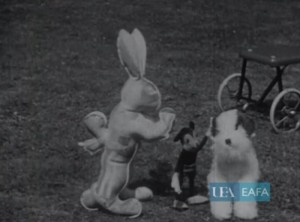
"A record of the second birthday of June Thubron. The spontaneous actions of a little girl on finding her birthday presents. A record of her actions without any adult direction. The little girl plays with her birthday presents on the lawn and also waters flowers in the garden before falling asleep. In a stop-frame animated sequence subtitled 'Dreamland' towards the end of the film, her new toys come alive." East Anglian Film Archive.
"Film focuses on women with short skirts walking inside or outside, shopping, with baby carriages or shopping carts, sitting down or walking down stairs" Archives of Ontario.
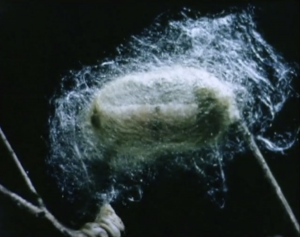
Documental sobre la metamorfosis del gusano de seda desde su nacimiento hasta su muerte, pasando por todos los procesos morfológicos.
A documentary about the silk worm metamorphosis, from its birth to its death, showing al morphologic processes.
Total Pages: 79